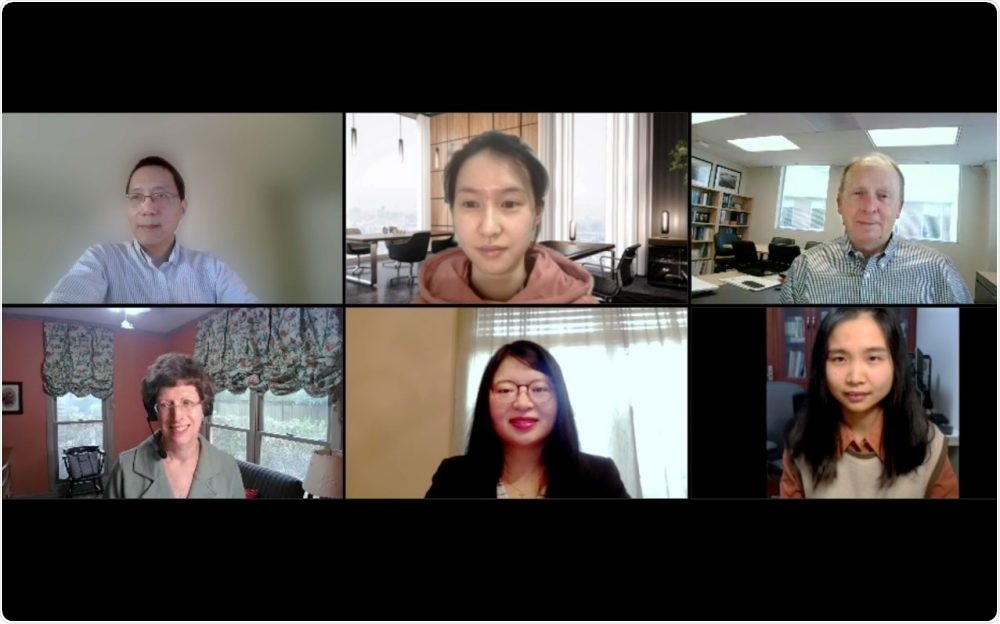Variants in two genes have been linked to premature aging in childhood cancer survivors, according to researchers at St. Jude Children’s Research Hospital. Their investigation focused on the age gap between their biological and chronological ages. The study is the first to discover genetic risk factors for premature aging in childhood cancer survivors, and it was published in the journal Genome Medicine.

Top left: Zhaoming Wang, PhD, Top middle: Cheng Chen, PhD, Top right: Les Robison, PhD, Bottom left: Melissa Hudson, M.D., Bottom middle: Qian Dong, PhD., Bottom right: Na Qin, PhD. Image Credit: St. Jude Children’s Research Hospital.
In the United States today, most children with cancer survive. Some survivors, on the other hand, suffer diseases that are more common in older people. It is unclear why certain individuals are more susceptible to age-related diseases than others.
This is one of a series of studies my lab has undertaken to investigate aging biomarkers in childhood cancer survivors. We previously evaluated non-genetic risk factors including cancer treatments, health behaviors, and chronic health conditions that contribute to age acceleration. This study focuses on the underlying genetic factors among these patients.”
Zhaoming Wang, PhD, Study Corresponding Author, Departments of Epidemiology and Cancer Control and Computational Biology, St. Jude Children’s Research Hospital
Over 6,000 childhood cancer survivors are being followed by St. Jude in the St. Jude Lifetime Cohort Study (SJLIFE). Researchers used whole-genome sequencing (WGS) of survivors’ DNA as part of SJLIFE to characterize genetic variants. The connection between common genetic variations generated from WGS data and epigenetic age acceleration (EAA) in SJLIFE users was investigated by Wang’s team.
EAA is a measure of the variation between each survivor’s “biological” and chronological age, and it has a significant link to the onset of age-related diseases.
Finding the premature aging needle in a genetic haystack
Wang’s team discovered mutations in two chromosomal areas linked to the onset of accelerated aging. The SELP gene had one variation and the HLA area had the other. Both of these genes play a role in age-related diseases. In Alzheimer’s disease, for example, SELP is elevated.
The researchers used an agnostic Genome-Wide Association Study (GWAS) technique to find the variations. The scientists use this approach to examine DNA variations found in survivor and community controls with various levels of biological aging (i.e., EAA).
Over 8 million variations were evaluated in the 3 billion base pair DNA genome, and two single nucleotide polymorphisms (SNPs) seemed to be significantly different across individuals with varying levels of biological aging. These SNPs, when combined with other non-genetic risk factors, may one day allow doctors to identify survivors at increased risk of accelerated aging when they show signs of it.
Our work can help determine subgroups at the highest risk for accelerated aging among childhood cancer survivors. The findings can also identify potential drug targets for future invention studies. For example, the protein produced by the SELP gene, p-selectin, already has an inhibitor used in other diseases.”
Zhaoming Wang, PhD, Study Corresponding Author, Departments of Epidemiology and Cancer Control and Computational Biology, St. Jude Children’s Research Hospital
St. Jude Cloud, which gives data and analysis capabilities to the worldwide research community, has made all of the data studied in the work available to the public for other researchers to use.
Source:
Journal reference:
Dong, Q., et al. (2022) Genome-wide association studies identify novel genetic loci for epigenetic age acceleration among survivors of childhood cancer. Genome Medicine. doi.org/10.1186/s13073-022-01038-6.